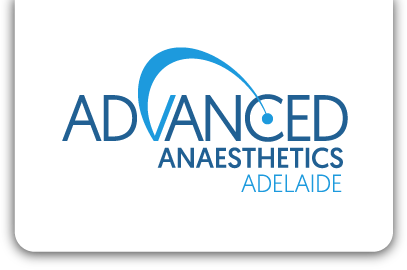We’re always here to help.
Anaesthesia for ENT (Ear, Nose and Throat)
ENT surgery usually requires general anaesthesia (GA). We focus on providing a safe GA with a rapid recovery and minimal side effects.
Examples of ENT surgery include:
- Placement of ear tubes (grommets)
- Removal of adenoids (adenoidectomy)
- Removal of tonsils (tonsillectomy)
- Nasal surgery (Septoplasty, Rhinoplasty)
- Functional Endoscopic Sinus Surgery (FESS)
- Middle ear surgery
Before the surgery
You or your child will be assessed by the anaesthetist. Questions will include those regarding current health status, previous anaesthetic experience, medical history, allergies and current medications. A physical examination of airway, heart and lungs will be performed.
If you or your child has a fever, cold or respiratory tract infection, cough or gastroenteritis (vomiting, diarrhoea), your anaesthetist may decide not to proceed with the surgery for safety reasons, to minimise any risk to you or your child’s health.
Our aim is to ensure that you or your child feel safe and happy while in the hospital. A sedative pre-medication may be offered if judged to be beneficial. Please check with your anaesthetist during your pre-anaesthetic visit.
Children often get paracetamol prior to their surgery as part of their pain relief.
Grommet Insertion
A short general anaesthetic (GA) is administered via a face mask.
The anaesthetic specialist will monitor your child closely using routine equipment, which includes oxygen levels, heart activity and blood pressure.
Children usually recover within 20-30 minutes with minimal side effects.
Tonsillectomy and Adenoidectomy
GA can begin either via face mask (younger children) or by intravenous (IV) technique (older children).
If your child requires IV insertion, anaesthetic cream can be administered on the skin approximately 1 hour prior to numb the area where the IV will be administered. Children who are anaesthetised via face mask will receive an IV line after they are asleep.
Once your child is asleep, an airway device will be inserted to keep his/her airway open and to prevent blood/saliva from entering the lungs. The breathing tube will ensure that your child continues to receive oxygen and anaesthetic gas.
The anaesthetic specialist will monitor your child closely using routine equipment, which includes oxygen levels, heart activity and blood pressure. Your child will receive medications to treat pain, prevent nausea and vomiting, and reduce airway swelling.
After the surgery, children normally spend about an hour in the post-anaesthetic care unit (PACU) before they are discharged to the ward. The IV cannula will remain in place until your child is ready to go home, so that he/she can continue to receive IV fluids (if required) and pain/anti-nausea medications.
Nasal Surgery
Adults
GA is usually by IV technique. Once you are asleep, a breathing tube will be inserted to keep your airway open and to prevent blood/saliva from entering the lungs.
The breathing tube will ensure that you continue to receive oxygen and anaesthetic gas. Your anaesthetist will monitor your oxygen levels, heart activity and blood pressure closely. You will receive medications to treat pain and reduce airway swelling.
After the surgery, you will be looked after in the post-anaesthetic care unit (PACU) by a recovery nurse, until you are ready to return to the ward or be discharged home (in day surgery cases).
Children
GA can begin either via face mask (younger children) or by intravenous (IV) technique (older children).
If your child requires IV insertion, an anaesthetic cream can be administered on the skin approximately 1 hour prior to numb the area where the IV will be administered. Children who are anaesthetised via face mask will receive an IV line after they are asleep.
Once your child is asleep, an airway device will be inserted to keep his/her airway open and to prevent blood/saliva from entering the lungs. The breathing tube will ensure that your child continues to receive oxygen and anaesthetic gas.
The anaesthetic specialist will monitor your child closely using routine equipment, which includes oxygen levels, heart activity and blood pressure. Your child will receive medications to treat pain, prevent nausea and vomiting, and reduce airway swelling.
After the surgery, children normally spend about an hour in the post-anaesthetic care unit (PACU) before they are discharged to the ward. The IV cannula will remain in place until your child is ready to go home, so that he/she can continue to receive IV fluids (if required) and pain/anti-nausea medications.
Functional Endoscopic Sinus Surgery (FESS)
GA is usually by IV technique. Once you are asleep, an airway device will be inserted to keep your airway open and to prevent blood/saliva from entering the lungs. An airway device will ensure that you continue to receive oxygen and anaesthetic gas. Your anaesthetist will monitor your oxygen levels, heart activity and blood pressure closely. You will receive medications to treat pain, prevent nausea and vomiting, and reduce airway swelling.
After the surgery, you will be looked after in the post-anaesthetic care unit (PACU) by a recovery nurse, until you are ready to return to the ward or the day surgery unit.
Middle Ear Surgery
GA is usually by IV technique. Once you are asleep, an airway device will be inserted to keep your airway open and to administer oxygen and anaesthetic gas. Your anaesthetist will monitor your oxygen levels, heart activity and blood pressure closely. You will receive medications to treat pain, prevent nausea and vomiting, and reduce airway swelling.
After the surgery, you will be looked after in the post-anaesthetic care unit (PACU) by a recovery nurse, until you are ready to return to the ward.


